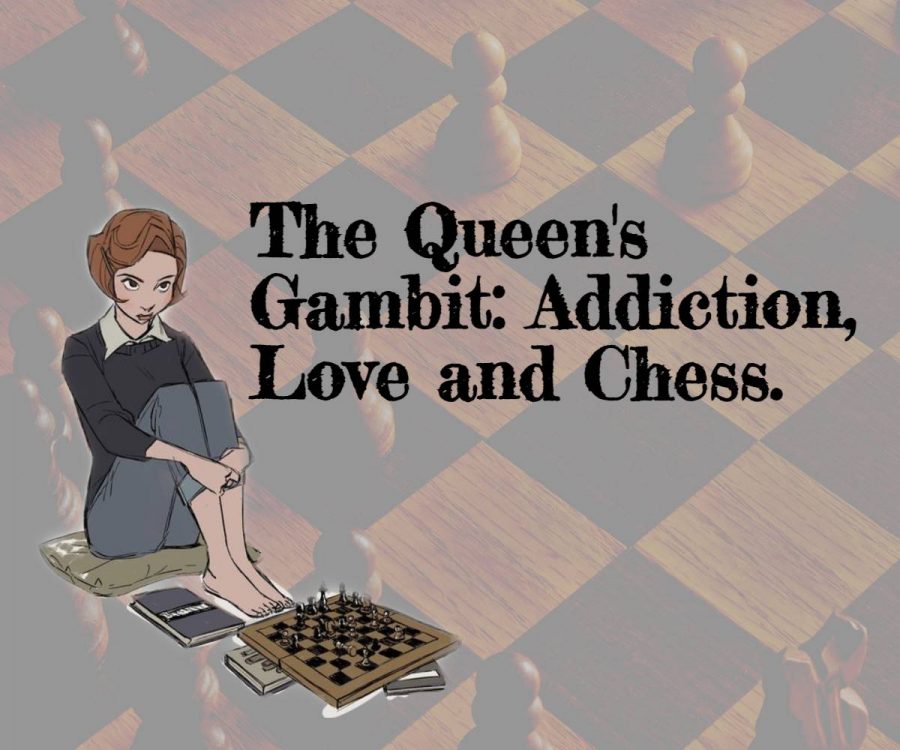‘The Queen’s Gambit’ is no pawn
*Spoilers Included*
Based on a book published in 1983, The Queen’s Gambit broke shocking view records, becoming the most watched limited series. It will be a standalone season as of date.
On October 23, 2020, Beth Harmon’s story through substance abuse, international chess competitions, and family loss was released as a Netflix limited series called “The Queen’s Gambit.” The show is about a girl who survives a lethal car crash, grows up in an orphanage, and meets a friendly janitor who teaches her chess. From there, the story is her adventure to becoming a grandmaster chess player, traveling the world, and fighting to belong in the chess world as a woman. The story was originally written by a man named Walter Tevis in 1983, loosely based upon his own life.
As someone who knew next to nothing about chess, I was hesitant to even take a look into the show at all. But as my eyes wandered across the trailer at the top of my Netflix application, I was dazzled by the beauty of Beth (Anya Taylor-Joy) and the intricate cinematography of each shot. I dove in headfirst and finished all seven episodes within a week.
Every scene in the show was shot with elegance. The show is set in the 50s and 60s, so every woman and man was dressed to the nines in suits and dresses, hair curled and gelled to perfection. According to interviews, Beth was fashioned in every scene to mimic pieces of the chess board, which is most evident in the last episode titled, “End Game.” She looks as powerful as ever, dressed in all white, a beautiful white queen.
The opening scene displays a hungover, sleep-deprived and dazed Beth running out of her hotel room and out to a game of chess. We later find out this was the point of peak addiction and self-destruction for her, and that her defeat at this game against Vasily Borgov (Marsin Dorocinski) was the beginning of her leisure trip to rock bottom.
One of the central issues that is shown during the entire show is addiction. When we see her learning chess with the janitor of the orphanage she was living in, the best way she could remember the board was by taking the pills that the doctors gave all the children. It was eventually found out that these “green pills” were tranquilizers. When the government outlawed the drug, she snuck into the pharmacy, shoved as many as she could down her throat, and then eventually passed out from an overdose in front of all her friends and teachers. This is just one of many displays of struggle that Beth has. She can’t help but lose control.
When she gets adopted by Ms. Wheatly (Marielle Heather) in the story, she gives Beth her first drink when out on a chess competition together. Beth downs the entire drink with no hesitation, and unlike most mothers, Ms. Wheatly was not stern. She let Beth have another, perhaps because she herself could relate to Beth. Wheatley had an absent husband, and a hollow home. She once had her own daughter, but she had passed away before the story even begins. She drinks the pain away and teaches Beth the same.
These messages are so powerful to an audience because addiction is an easy thing to run into in everyday life. Whether someone has a family member who goes to AA meetings, or has a friend who is dependent on their pain meds, it’s easy to let the substances consume life, as it did for Beth. When Ms. Wheatley passes away, Beth’s days intertwined, she let the addiction control her.
That’s exactly the pull for someone like me. Her biological parent’s neglect and abandonment, her adoptive mother’s addiction, and her own struggles with alcohol and drugs are all very raw human flaws that everyone can sympathize with. This story of a female chess prodigy is a wonder in itself, but what makes it go past good to amazing are the emotional aspects. It’s a coming-of-age story, an account of loss, addiction and the struggle every awkward teen has with sex.
No matter what stage of life you are in, this show will tug at your heartstrings, and make you root for Beth even when her choices making you want to pull out your hair. It may even motivate you to start up a game of chess.

